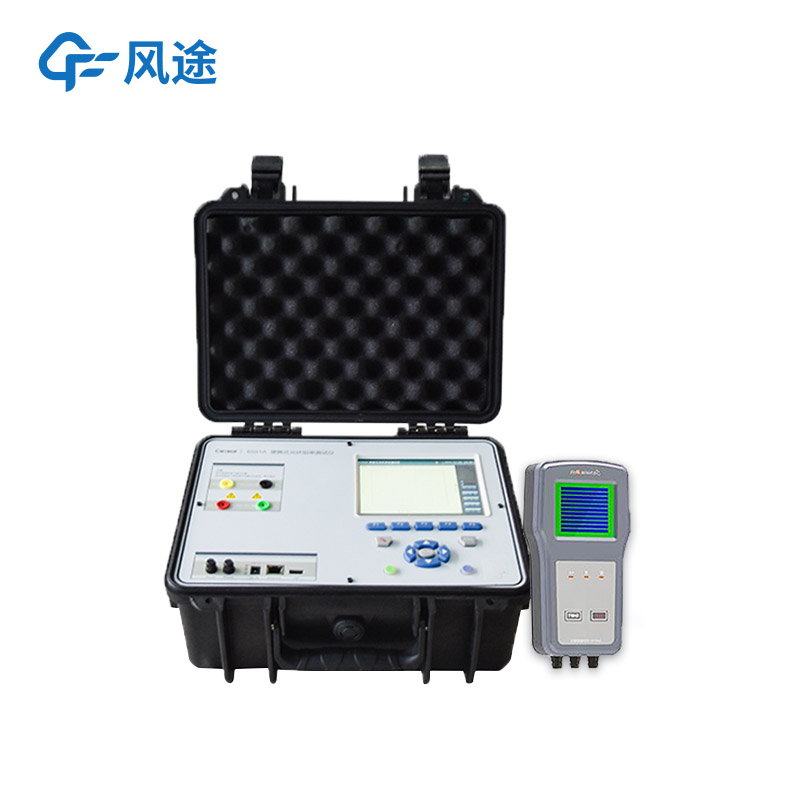Shandong Fengtu IOT Technology Co., Ltd
Sales Manager:Ms. Emily Wang
Cel,Whatsapp,Wechat:+86 15898932201
Email:info@fengtutec.com
Add:No. 155 Optoelectronic Industry Accelerator, Gaoxin District, Weifang, Shandong, China

Sales Manager:Ms. Emily Wang
Cel,Whatsapp,Wechat:+86 15898932201
Email:info@fengtutec.com
Add:No. 155 Optoelectronic Industry Accelerator, Gaoxin District, Weifang, Shandong, China
time:2025-03-10 09:26:52 source:Weather Station viewed:392 time
IV curve testing is a commonly used method for detecting the performance of photovoltaic power generation systems. The Portable IV Curve Tester can conduct on - site tests on the power, open - circuit voltage, short - circuit current of photovoltaic modules under different temperature and irradiance conditions, as well as the voltage and current at the maximum power point, and convert the obtained data to standard test conditions (STC). With the help of a special algorithm, this tester can also calculate the series resistance Rs, which is helpful for troubleshooting problems in the modules and their connections.
Conducting IV characteristic tests on photovoltaic modules can accurately verify the power generation efficiency of the equipment and the stability of the system. To further improve the operation efficiency of the power station, it is necessary for the power station to regularly organize spot - checks of the IV characteristic tests of the modules.
Operation and maintenance personnel select photovoltaic modules from different areas and different installation batches in the station as inspection samples. During the noon period when there is abundant sunlight and stable irradiance, the Portable IV Curve Tester is used for testing. Simulating the real working scenario, operation and maintenance personnel carefully record the current and voltage values of each module when the irradiance reaches 1000W/m², and analyze the operation status of the modules based on the IV curve generated by the equipment.
During the entire spot - check process, operation and maintenance personnel not only pay attention to whether the power attenuation degree of the modules is within the specified range but also deeply analyze key parameters such as the fill factor, open - circuit voltage, and short - circuit current to comprehensively evaluate the performance of the modules. Once a module with performance deviation or potential failure is found, operation and maintenance personnel immediately mark it and include it in the subsequent repair and replacement plan of the power station to fully ensure that the overall power generation efficiency of the power station is not affected.
The spot - check action of the power station is not only a comprehensive "physical examination" of the performance of photovoltaic modules but also a key measure to continuously optimize the operation and maintenance strategy and improve the power generation efficiency.

A miniature automatic air monitoring station is an intelligent device for monitoring air quality, which usually consists of one or more sensors, a data collector and a data processing system. It can monitor a wide range of pollutants in the air in real time, including particulate matter, ozone, nitr...
The selection of Ultrasonic Wind Speed Direction Sensor should take various factors into comprehensive consideration.Firstly, measurement accuracy is crucial. In scenarios such as meteorological monitoring and scientific research where high data accuracy is required, a high-precision sensor is indis...
The recent period has seen heavy rainfall in some parts of the country, so much so that red warnings for heavy rainfall have been issued in various places. For cities, heavy rainfall means the possibility of waterlogging problems. Once there is waterlogging in the city, it affects the life and trave...
Although the Air quality monitoring station is a fixed facility, its greatest advantage lies in its ability to achieve a high-density and refined regional monitoring layout.There are a limited number of large-scale air quality monitoring stations, and they are sparsely distributed. They can of...